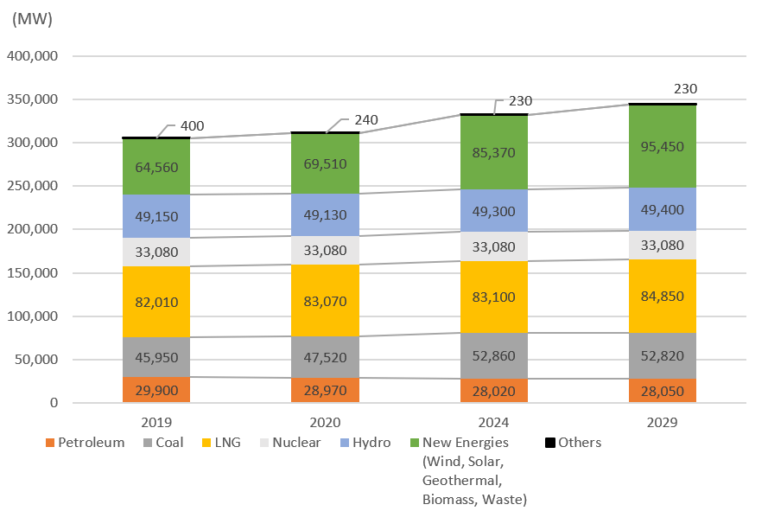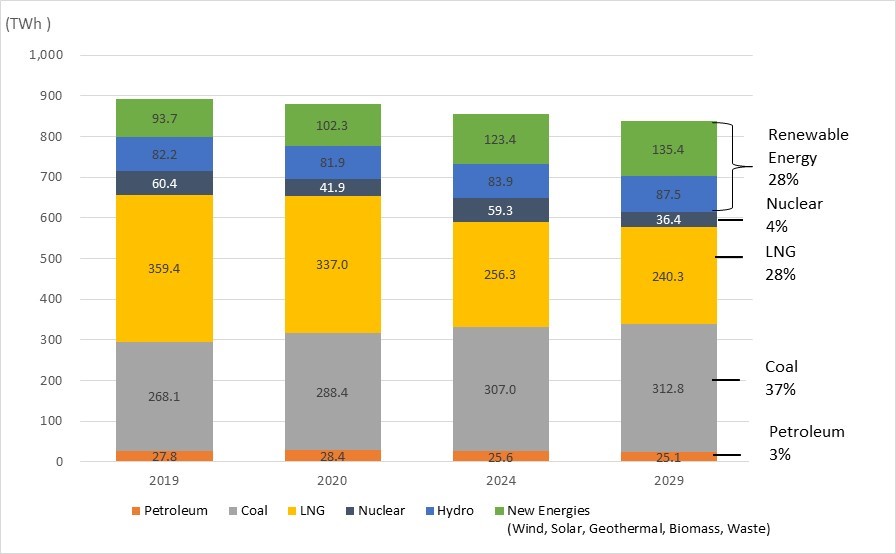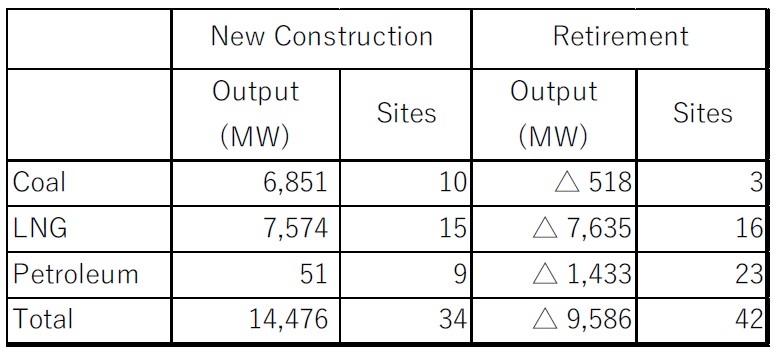The Japanese government’s Strategic Energy Plan designates coal-fired and nuclear power plants as “an important base-load electricity source,” and, based on the Plan, the Long-term Energy Supply-Demand Outlook designates the power supply composition as 20-22% nuclear, 22-24% renewables, 27% LNG, 26% coal, and 3% petroleum. To meet the 1.5°C target under the Paris Agreement, it is necessary for developed nations to phase out coal-fired power by 2030, yet the power supply composition set in the Outlook is far from meeting that target.
FY2029’s power supply projected to be 37% coal
However, the Aggregation of Electricity Supply Plans for FY 2020 (in Japanese), released on March 31st, 2020 by the Organization for Cross-regional Coordination of Transmission Operators, Japan (OCCTO), shows that power suppliers are planning to generate a far larger share of electricity from coal-fired power plants than designated in the Outlook. In the Aggregation, the power supply composition of FY 2029 is 28% renewables (18% new energies [wind, solar, geothermal, biomass, waste] + 10% hydro), 4% nuclear, 28% LNG, 37% coal, and 3% petroleum. Based on the Aggregation, the share of electricity generated from coal-fired power plants in FY2029 will increase by about 17% compared with FY 2019. This means that coal will have the largest share of electricity generation and also greatly exceed the 26% by 2030 as set in the Outlook.
Projected Transition of Electric Energy Generation (net) by Power Generation Source
(Figure developed by Kiko Network from OCCTO(2020) “Aggregation of Electricity Supply Plans for FY 2020”)
Coal to account for all increases in the installed capacity of thermal power plants
An overall positive trend can be seen regarding the installed capacity of power plants, and although the installed capacity of hydro and nuclear power is expected to remain constant, thermal power is predicted to increase by about 4 GW, and generation from renewables by 30 GW. A breakdown of the installed capacity of thermal power plants by source shows that capacity for petroleum and LNG is expected to decrease, but capacity for coal is expected to increase – which, when calculated, reveals that the entire increase in the installed capacity of thermal power will come from coal-fired power plants.
Installed Capacity (National Total)

Construction and retirement plans show power suppliers’ policy to increase dependence on coal
In the plans specified in the Aggregation for the construction and retirement of thermal power plants, the retirement of power plants using petroleum will move ahead, and the number of planned constructed and retired power plants using LNG will be nearly equal with outputs remaining constant. However, for coal-fired power plants, power suppliers are adding new plants while maintaining obsolete and inefficient ones, demonstrating power suppliers’ policy to increase dependence on coal.
Planned construction and retirement of power plants
(Figure developed by Kiko Network from OCCTO(2020) “Aggregation of Electricity Supply Plans for FY 2020”)
Capacity factor of coal-fired power to be maintained at approx. 70%
In addition, examining the capacity factor of each power generation source shows that the capacity factor of coal-fired power plants is expected to remain steady at about 70%, while the capacity factor for LNG power plants will decrease by 16% – from 48.9% in 2019 to 33.1% in 2029 – showing that power suppliers plan to prioritize coal over LNG.
Projected trends of capacity factor by power generation source

Conclusion
From the Aggregation, it is clear that the policy of power suppliers is to further increase the capacity factor of high carbon coal-fired power plants. As a result, the expected CO2 emissions from coal-fired power plants in FY 2029 under the plan will be enormous – estimated to be about 266 million tons*. This policy is contrary to the policy direction stated in “The Long-term Strategy under the Paris Agreement,” approved by the Cabinet in June 2019:
The Government will work to reduce CO2 emissions from thermal power generation to realize a decarbonized society and consistent with the long-term goals set out in the Paris Agreement. In this regard, the Government will work to reduce reliance on coal-fired power generation as much as possible by fadeout inefficient coal-fired thermal power generation. (P.27-28)
If this situation continues, it is evident that Japan’s coal phase out will not progress any further. In order to realize net zero emissions by 2050 and a “decarbonized society,” the Japanese government should strive to change its climate and energy policy, including revising the electricity mix and clearly stating a policy to reduce coal dependence.
*Estimation based on the expected power generation (net) in FY 2029 under the Aggregation of Electricity Supply Plans for FY 2020.
Amount of power generated from coal-fired power plants (net), 312.8 billion kWh is converted to power generated from coal-fired power plants (gross) by setting the internal consumption rate as 6%. CO2 emissions are calculated using the converted amount by setting carbon intensity as 0.8㎏CO2/kWh for power generated from coal-fired power plants.
312.8/0.94*0.8=266.2
References:
The Government of Japan “The Long-term Strategy under the Paris Agreement”



